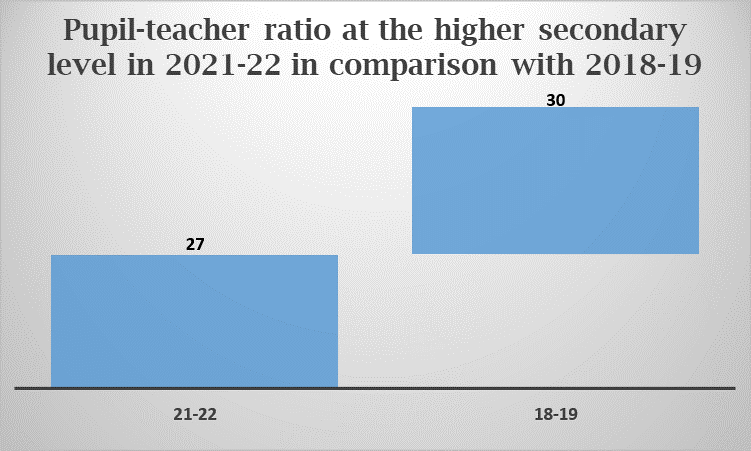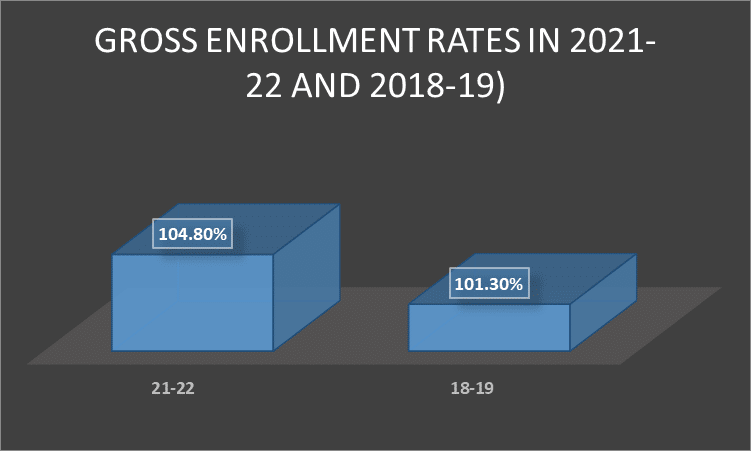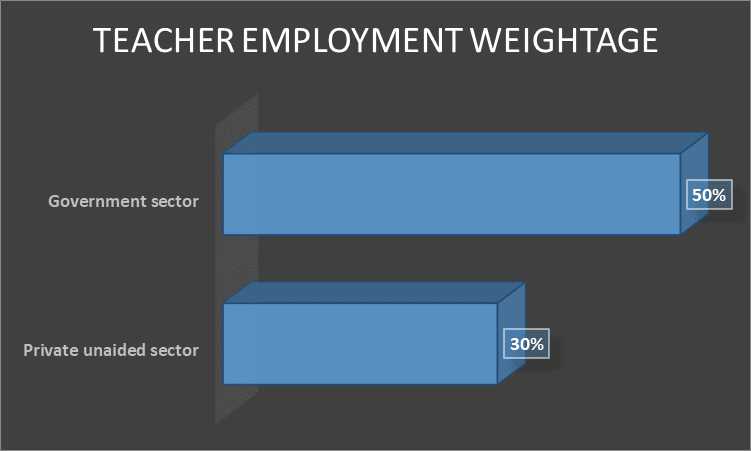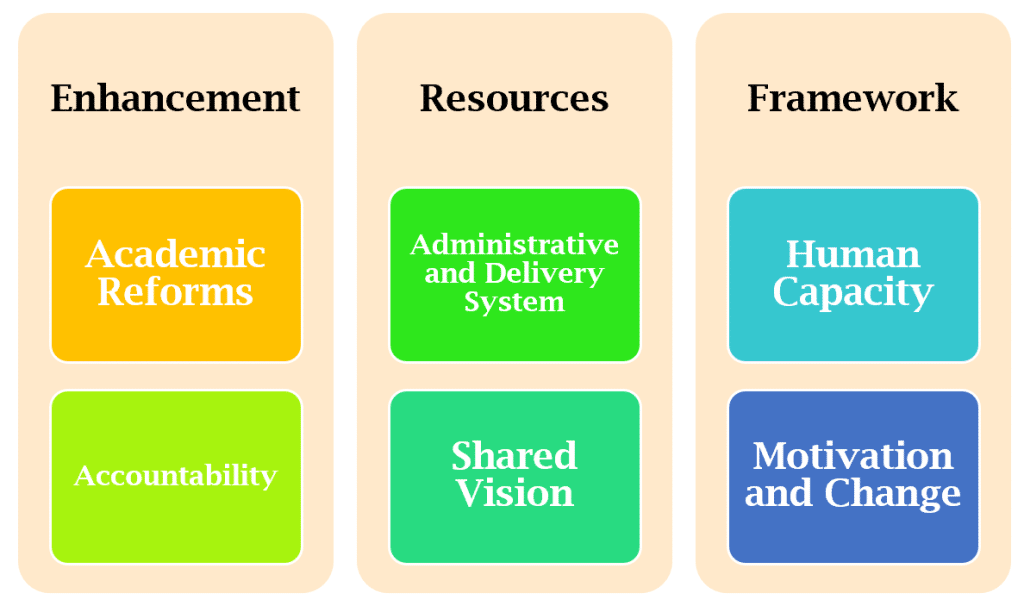The Indian education system has come a long way from the age of the gurukuls to the digitally-driven smart classes. And in the past few decades, it is striving hard to match the pace of the global village.
From the Right to Education, 2009 act to the National Education Policy 2020, there is a lot that we have already achieved.
Here are some heartening facts:
As per the recent report by the United Information System for Education Plus (UDISE+) in 2021 India is one of the largest education systems in the world with:
- 89 lakh schools
- 95 lakh teachers
- 52 crore students
- Gross enrollment rates of 104.8% in 2021-22 (was 101.3% in 2018-19)
- Pupil-teacher ratio of 27 at the higher secondary level in 2021-22 (was 30 in 2018-19)


But till date, it is not enough to be celebrated!!
According to UNICEF, India has made great strides in improving access to quality education!
But our system needs to be in top shape to meet the expectations of this highly competitive post-pandemic world!

Here’s a look at 5 potential ways to improve our mainstream education system at the ground level:
1. Stakeholder Involvement to Get the Basics Right
Despite some well-drafted frameworks and futuristic policies, we still MISS THE BULLSEYE because of our prevalent system issues. In other words, our education sector is bearing the brunt of a defective system structure.
Our faulty administration and insufficient monitoring mechanisms keep these policies ‘MOSTLY ON PAPER’. As a result, mostly these reforms do not even reach the students.
These challenges are not confined to the division of legislative powers in the federal structure. But also to the overall mindset of the masses and their acceptance of the age-old voids.
There is an urgent need to strengthen our system with a strong sense of ownership across departments, profiles, and even the stakeholders. Today, we need a combined effort of the government and the stakeholders to execute the visionary practices of our ‘Education policies’.
Apparently, there should be a SHARED RESPONSIBILITY across the society to raise the bar of education. Because it is essential for each one of us to know the designs of the policies introduced by the government in and out. Each member of the social system should be equally responsible for ensuring adherence to these policies at the ground level. Only then we can expect some change at the grass-root level.
2. Purposeful Education to Close the Skill Gap
Another big reason behind the ‘BROKEN INDIAN EDUCATION SYSTEM’ is its faith in the age-old practices like cramming and memory-level teaching. 60% of the Indian companies reported a lack of relevant skills in candidates.

Age-old frivolous techniques are just an aid to succeed and survive the mindless rat race of grades. On the other hand, purposeful learning is more about connecting the parts of the concept together and cementing it at an understanding level.
In other words, we need a more constructive and concept-oriented system that empowers our students for global citizenship. Purposeful or meaningful learning is also great to nurture high-order thinking skills in students. It promotes hands-on learning, problem-solving, and vocational skills, in them.
The National Policy of Education, 2020 acknowledges the importance of rational thought process, a scientific temperament in students. But it is possible only through purposeful education.
One practical way of materializing this is to follow Jean Piaget’s ‘Cognitive Development’ theory. This one is ideal in today’s age and date because it deals with the development of the student’s reasoning abilities and aims at building conceptual understanding
3. Driving 21st Century Transferable Skills
As per UNESCO, the lack of skills and abilities in Indian youth is the biggest reason for ‘unemployment’. Unfortunately, our masses of deprived of training and skill-building programs. And over 30% of the Indian population (between the age groups of 15 to 29) falls in this category.
In a world where skills have a high value in the future, our Indian system still lacks this 21st-century skill-building. Intelligentsia across the world has suggested a simple solution to incorporate these portable or transferable skills in our main curriculum. Because there will help our students to explore different career options even without prior experience.
Especially in this ‘Information Age’, such soft skills are a passport to the best opportunities in the global workforce. Because the Indian students need a strong skillset to survive the competition of the international workforce.
The NPE 2020 does talk about skill-building through innovative ideas such as ‘Bagless days’ etc. but again it is limited to hands-on activities and experiential learning only. In the end it does not match with the global perspective of these 21st century soft and transferable skills.
Hence, our system needs to be revamped to inculcate these relevant leadership, decision making and complex communication skills in students.
4. Improving Teacher Quality
The ‘tripolar process’ of education needs the support of a good teacher. But, our education system does not have enough quality teachers. As per UNESCO’s State of the Education Report for India-2021, 30% of the teachers were employed in the private unaided sector and 50% in the government sector. Almost 50% of the workforce was accounted for by women. However, there are some variations in this figure, and the rural-urban disparity is another concern.

To realize our high-end educational goals and fill the gaps in our existing system, we need expert educators who can convert theories into real classroom practices.
And these stakeholders alone can enshrine the values of our education policies and turn all the futuristic designs into a reality. Because in another 12 years, almost 27% of the current workforce will need to be replaced.

Most importantly, we need to get the right talent in the industry. And empower them through technological upskilling and other professional development activities.
The thumb rule here again is to manage the workload of our teachers. And retain the best talent. Additionally, professional recognition, incentives, and provisions to maintain a good work-life balance are also a need of the hour.
5. Integrating Technology
We have already discussed that a huge gaps and educational crisis in India are depriving our population of some life-changing opportunities. But thankfully, when technology has transformed the entire world, it is also an answer to our problems.
Through Ed-tech we can create an alternative pattern of regular classroom learning. And it is an ideal way to support the traditional schooling structure and eliminate issues like inclusion, engagement, quality, and overreliance on educators.
The Indian government has already promoted digital learning through various projects. Some of these initiatives are:
- PM eVidya
- DIKSHA
- NISHTHA
- VidyaDaan
- MOOCs on DIKSHA
But they should also follow footsteps of other countries who are doing better in this field.
Sub-Saharan Africa is one of the best examples of ICT advancement through the improvement of internet connectivity. Hence, we should take up first things first and connect even the remotes of Indian regions with the internet. The government initiatives will reach the people only if they are digitally literate, which again is dependent on the access of internet connectivity and other infrastructure.
Urban India has already experienced the technological boom with the rise of online education supported by online learning platforms. And now it’s time to connect the other parts of our country with this ‘LEARNING REVOLUTION’.
How can the NPE 2020 Fulfil the Vision of our Policymakers and transform the Education System?
To make NPE 2020 successful at the ground level, the NITI Aayog came up with some brilliant suggestions/measures to improve the quality of education in India. This report highlighted 5 pillars of systematic transformation basis the success stories of various states. It also presented an implementation toolkit.
Pillars:
- Academic Reforms
- Enhancement programs
- Competency framework
- Assessment-related reforms
- Online learning
- Administrative and Delivery System
- Optimizing school resources
- Utilizing tech and data systems
- Restructuring organization
- Streamlining communications
- Human Capacity
- Teacher and admin recruitment and rationalization
- Staff training and mentoring
- Promoting school leadership
- Accountability
- Monitoring and reviews
- A Shared Vision for Change
- Driving engagement and competition framework

Conclusion:
The Indian education system needs a highly practical and well-executed ROADMAP to reach the desired benchmark. The way forward is certainly difficult but still not impossible!
Hopefully in the years to come, the world will see a new face of Indian education, where it will be an inspiration for other nations to follow!
And to make this happen we need to make use of technology which is a true GAMECHANGER!


